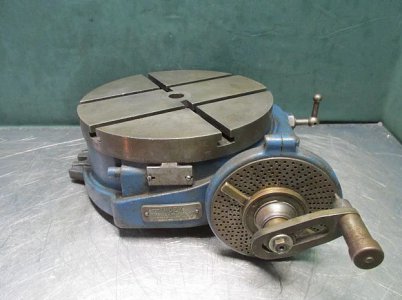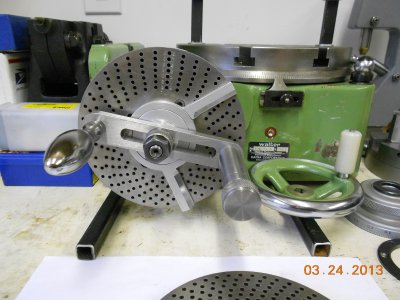- Joined
- Apr 14, 2014
- Messages
- 3,168
Here's an example of a horizontal only rotary table/indexer. This one is not mine. Mine doesn't have the indexing option. :

I'm not sure if anyone today still makes this type of table. I've never seen one that can be used both horizontally and vertically. I can bolt mine to a 15" angle plate, but it's all but impossible to move around. The indexer weighs around 250 lbs. and the angle plate weighs another 150 lbs.

I'm not sure if anyone today still makes this type of table. I've never seen one that can be used both horizontally and vertically. I can bolt mine to a 15" angle plate, but it's all but impossible to move around. The indexer weighs around 250 lbs. and the angle plate weighs another 150 lbs.




